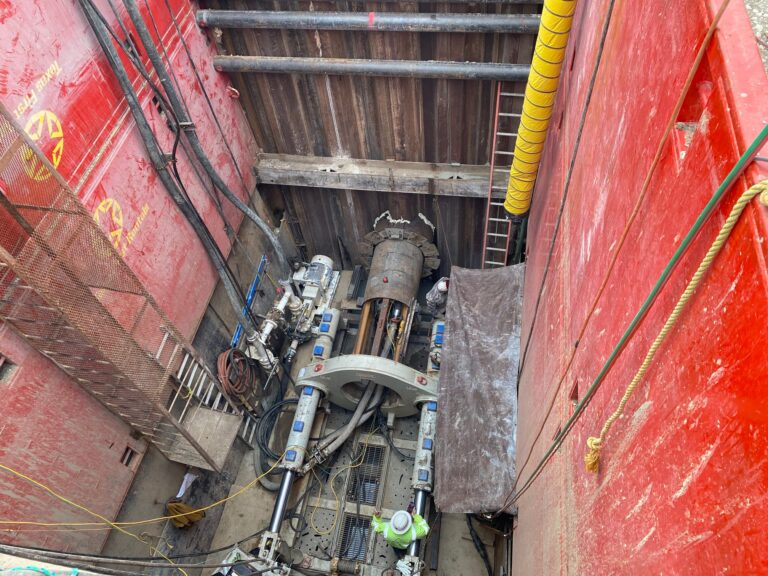Project At-a-Glance
- Replacement of existing 54-inch gravity sewer under CSO agreement between SAWS and the EPA
- 27,700+ FT of tunnel ranging from 96 inches to 142 inches in excavated diameter carrying 60-inch to 104-inch FRP for a gravity sewer
- 9 vertical permanent access shafts ranging from 30 to 150 feet below the ground surface
- Two 36-inch trenchless crossings under Highway 90 performed via MTBM
- Accelerated design and construction timeline with design completed in under 12 months and construction in under 36 months
- Two Lovat TBMs run predominantly in open mode and ribs and boards with semi-EPB modes run under creek crossings with gasketed steel channel lagging
- Constructed through the Navarro formation Claystone with a high shrink-swell potential and naturally occurring hydrocarbons
Project Narrative
The San Antonio Water System (SAWS) W-6 Upper Segment: Highway 90 to W Military Drive Sewer Main project is a sanitary sewer replacement project located on the west side of San Antonio, TX. The alignment extends along Highway 90 and Military Drive and consists of replacing 19,000 linear feet of 54-inch sanitary sewer with about 29,190 linear feet of 60‑inch, 78-inch, and 104-inch FRP gravity sewer pipelines. Approximately 485 linear feet of pipe were installed through open trenching, 943 linear feet by means of hand tunneling, and 27,762 linear feet were installed through deep tunneling with a TBM. A total of 9 shafts are located along the alignment. This project ties into the W-1 Lower Segment Sewer located at the north end of the project and connect to the W-6 Middle Segment Sewer located at the south end of the project.
SAWS entered a Consent Decree with the United States Environmental Protection Agency (EPA) in June of 2013. Brierley Associates was hired by Kimley-Horn Associates as the lead tunnel designer for the project, overseeing the faced paced 12-month design schedule. Design was performed concurrently with the geotechnical investigation in three phases.
The contract was awarded to SAK Construction (now Affholder), who completed the project with two Lovat machines. The machines were run in both open mode and semi-EPB mode with a sliding door before the conveyor to control face pressure. The Navarro formation was advantageous to mining, but posed risks associated with naturally occurring hydrocarbons and exhibited swelling behavior when left exposed to water sources. The tunnel was supported by means of 4×13 steel ribs and wood lagging with gasketed steel channels being used in conjunction with semi-EPB mode beneath the creek crossings. The annular spaces were grouted with cellular foamed grouting performed by Pacific Grout International (PIG). Additionally, two trenchless crossings were performed to connect lateral tie-ins beneath Highway 90 via Microtunneling with a MTBM. The project was completed on time and within budget.





